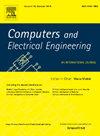HardSecUAV: A hardware-based mutual authentication protocol for network of drones
IF 4
3区 计算机科学
Q1 COMPUTER SCIENCE, HARDWARE & ARCHITECTURE
引用次数: 0
Abstract
Unmanned Aerial Vehicle (UAV) networks are increasingly utilized in various applications, yet they face significant security challenges due to their open operational environments and resource constraints. Existing authentication protocols often rely on stored secret keys, making them vulnerable to physical attacks and key compromise. To address this research gap, we propose HardSecUAV, a lightweight and secure authentication protocol that leverages hardware-based security features of the DS28S60 cryptographic coprocessor, including Physically Unclonable Functions (PUFs). Our protocol eliminates the need for secret key storage by generating device-specific secrets on-demand, enhancing resistance to physical attacks. Implementation results demonstrate that HardSecUAV achieves a total computation time of approximately 28.775 during the authentication phase, suitable for real-time operations. The storage requirement is 1024 bits, and the communication overhead is 1664 bits, comparable to existing schemes. Compared to existing protocols, HardSecUAV provides enhanced security features, including mutual authentication, replay attack resistance, forward secrecy, and UAV-to-UAV authentication without dependence on Ground Station(GS), making it a robust solution for securing UAV networks.
求助全文
约1分钟内获得全文
求助全文
来源期刊

Computers & Electrical Engineering
工程技术-工程:电子与电气
CiteScore
9.20
自引率
7.00%
发文量
661
审稿时长
47 days
期刊介绍:
The impact of computers has nowhere been more revolutionary than in electrical engineering. The design, analysis, and operation of electrical and electronic systems are now dominated by computers, a transformation that has been motivated by the natural ease of interface between computers and electrical systems, and the promise of spectacular improvements in speed and efficiency.
Published since 1973, Computers & Electrical Engineering provides rapid publication of topical research into the integration of computer technology and computational techniques with electrical and electronic systems. The journal publishes papers featuring novel implementations of computers and computational techniques in areas like signal and image processing, high-performance computing, parallel processing, and communications. Special attention will be paid to papers describing innovative architectures, algorithms, and software tools.
 求助内容:
求助内容: 应助结果提醒方式:
应助结果提醒方式:


